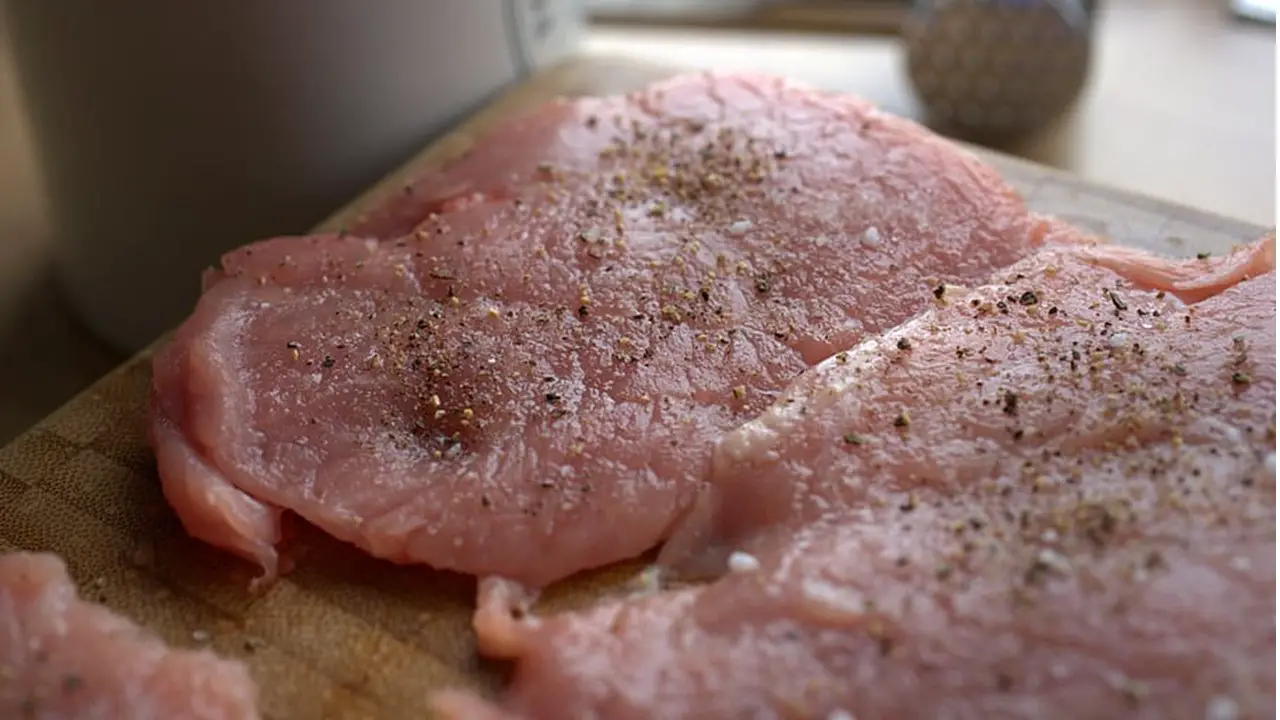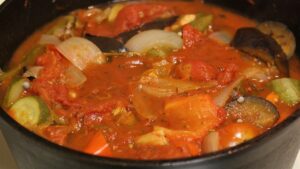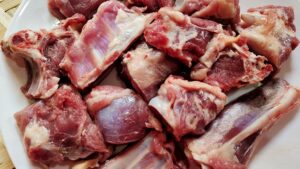What is Tenderizing?
Tenderizing is a cooking process that involves tendering the whole food on which it is applied so that it becomes easy to cook, chew and digest.
It depends on the choice of using tenderizing techniques like marinating the food, braising, and even using the mallet. During the process, the soft connective tissues are broken which makes them tender.
Key Takeaways
- The tenderizing technique is done over the proteinaceous food so that it can be easily chewed and cooked.
- Tenderizing is done with physical tools like mallets and meat pounders.
- There are natural tenderizing agents like lemon juice, papain, kiwi, and tamarind which also tenderize the food.
Understanding Tenderizing

In the context of how much time you need to chew your food, one must say there is a famous quote by Daniel Lieberman: “Chimpanzees spend half of the day chewing.”
To enhance food making with tenderness and easy chewing, slicing and pounding of the meats and vegetables came into being by our ancestors.
Homo erectus evolved with weaker and smaller jaws. Tenderization began as the cooking process started which goes back 500,000 years.
During that period either the food was eaten untenderized or sliced or bashed with Flintstone tools.
It worked out better when the food is being used after being pounded which breaks the tissues and tenders the whole item.
Tenderizing of the meat is done with needles, knives, or even blades. With the help of the needle, it is very easy to penetrate the food and get inside it. This helps in the whole process of perfecting skills.
Importance of Tenderizing
Tenderizing is a unique technique by which it is very easy to soften the food during the whole cooking.
You will simply have all the right kinds of tools and skill sets which will otherwise allow the tenderization of the whole food.
Improve the Quality of Food
With the help of tenderizing the food is softened and it becomes very easy to cook as well as to eat the entire food.
Food like meat and poultry are tenderized with the help of enzymes and even external tools which actually makes them soft and also helps them to cook nicely. A variety of food is being developed.
Tenderizing Helps in the Absorption
You can say that tenderizing helps in the absorption of the marinade or vice versa.
When the tenderization is done with the help of the tool then the main rationale behind it was the absorption of the marinades and seasoning.
But in case of the marination also it tenderizes the meat and helps it to absorb the seasoning better.
Easy for Digestion
Tenderized meat is always easy and effective for digestion. Good tenderizing simply helps in perfect digestion.
As the food is tender the whole digestion process becomes easy and quick in the same way. The meat tends to be better for health with tenderization.
Recipes Become Easy
When you are tenderizing the recipes simply become very easy to follow. It helps you to save time on the whole process as seasoning and spices tend to penetrate the whole food.
Less Demand for Chewing
Tenderization simply makes the food easy to chew. The chewing process simply becomes very easy and effective with the help of tenderizing quality.
It is making the food flatten and tender at the same time so it simply becomes very easy to chew, eat and digest.
Types of Tenderizers
Two types of tenderizers are generally applied to the food. Generally, it is seen that this tenderization is followed in a way so that whole food gets softened and becomes easy to cook & digest.
Physical (Mechanical) Tenderizers
Physical tenderizers simply mean the gadgets which are used to mechanically or physically separate the collagen to make the food tend.
Two tools make the tenderization process perfect like bladed/needled models and mallets.
Chemical Tenderizers
There are enzymes and acids which are used to tender the food. The actions of these enzymes make the whole food tender and soften the whole tissue which makes it perfect for cooking.
Tips for Better Tenderizing
There are a few tips and tricks which help in tenderization. These tips if wisely followed give you a better idea of dealing with the whole technique.
Select the right cut: When you are doing tenderization then it is better to select the cut so that you can get enough surface area for pounding. But this does not matter if you are not using a mallet or knives.
Use the right marinade: You can simply tenderize the whole food with the use of the right kind of acid like papain, lemon juice, vinegar, etc.
These will help the entire food get to tenderize fast, softening the protein and soft tissues that get easily broken. This makes the food soft and perfect.
Use salt: You can simply use the salt while tenderizing as it will penetrate the food while it is getting tenderized.
Give a marinade rub: When you are tenderizing then rub the marinade in a better way so that you can simply make the food processing soft and perfect. The seasoning simply gets inside the whole food while the food is tenderized.
Uses of Tenderizing in Indian Cuisine
Tenderizing plays a crucial role in Indian cuisine, enhancing the taste, texture, and overall quality of various dishes.
Indian cooking often incorporates tenderization techniques to ensure that meats, fish, and poultry are cooked to perfection, resulting in tender and flavorful preparations.
Let’s explore the uses of tenderizing in Indian cuisine:
Acidic Tenderization: Indian cuisine often employs acidic tenderization techniques to soften the proteins and connective tissues in meats.
Common tenderizing agents used in Indian cooking include papain, tamarind, curd (yogurt), and vinegar. These acidic ingredients break down the tough fibers, making the meat more tender and easy to cook.
Enhancing Flavor and Texture: Tenderizing agents not only contribute to the tenderness of the meat but also infuse it with flavors.
In Indian cuisine, tenderizing agents like papain, which is derived from papaya, and tamarind add a unique tanginess to the dishes, enhancing their overall taste.
Additionally, the tenderized meat has a more desirable texture, making it enjoyable to eat.
Reduction in Cooking Time: Tenderization techniques in Indian cuisine help reduce the cooking time required for certain dishes.
By breaking down the connective tissues and proteins, tenderizing agents ensure that the meat cooks faster and more evenly.
This is particularly beneficial for recipes with limited cooking time or when preparing tender cuts of meat that are traditionally slow-cooked.
Qualitative and Digestible Preparations: Tenderizing agents used in Indian cuisine contribute to the qualitative aspect of dishes.
By tenderizing the meat, fish, or poultry, the resulting preparations are not only softer and more succulent but also easier to digest.
This is particularly important in Indian cooking, which often features rich and flavorful dishes that should be enjoyable and gentle on the digestive system.
Popular Tenderized Dishes: Indian cuisine offers a wide array of dishes that incorporate tenderizing techniques.
For instance, mutton curries, a staple in Indian cuisine, are often prepared with acidic tenderizers like yogurt and papaya to ensure that the meat becomes tender and imparts a delightful flavor to the dish.
Similarly, baked fish and chicken dishes are commonly tenderized using tenderizing agents to ensure they are moist, tender, and flavorful.
Finally, tenderizing techniques play a significant role in Indian cuisine, adding tenderness, flavor, and quality to a variety of dishes.
The use of acidic tenderizers and other tenderizing agents helps to break down tough fibers, reduce cooking time, and create delicious, easy-to-digest preparations.
Whether it’s mutton, fish, or poultry, tenderizing is a valuable technique that contributes to the rich and diverse culinary traditions of Indian cuisine.
Questions & Answers:
What is a Natural Tenderizer?
There are some enzymes which naturally have the power to tenderize whole food like beer or wine, vinegar, baking soda, ginger, pineapple, papaya, figs, kiwis,coffee, tea, etc.
These are simply known as natural tenderizers. These help in making the food soften, absorbing the seasoning, and then tendering the food.
Is Salt a Tenderizer?
Yes, salt can act as a tenderizer in cooking. While it doesn't break down proteins like enzymatic or acidic tenderizers, salt has the ability to enhance the flavor and texture of meat.
When used as a dry brine or in a marinade, salt helps to draw out moisture from the meat, creating a brine that is then reabsorbed, resulting in juicier and more flavorful meat. The salt also helps to break down some of the muscle fibers, making the meat more tender.
Additionally, salt has a unique ability to enhance the perception of flavors, so when used in moderation, it can make the natural flavors of the meat more pronounced and enjoyable.
It's important to note that salt is not as potent of a tenderizer as enzymatic or acidic agents, but it can still contribute to improving the texture and taste of meat when used correctly.
What is an Enzyme Tenderizer?
An enzyme tenderizer is a substance or ingredient that contains natural enzymes capable of breaking down proteins in meat and other foods, resulting in improved tenderness. Enzymes are biological molecules that act as catalysts, accelerating chemical reactions in living organisms.
Conclusion
Tenderization is a simple process that makes the food tender in a way so that it can easily be cooked, and digested, and even the seasoning gets absorbed perfectly.
The whole process is meant for better food taste and quality.







